Description of the tomato variety Eagle Heart, features of cultivation and care
Almost all growers are engaged in growing tomatoes in their summer cottages. Among lovers of large fruits, such a variety of tomatoes as the Eagle Heart is popular. Such tomatoes are distinguished by good taste and sweet pulp.
Description and distinctive features of the variety
Before you start planting tomatoes, you need to familiarize yourself with the characteristics and descriptions of this variety.

Description of the bush
Eagle Heart is considered a common tomato variety that is intended for greenhouse cultivation. It is in greenhouses and greenhouses that maximum productivity is achieved. However, some gardeners plant it in the open field, and still get a good harvest.
The variety belongs to the group of indeterminate plants that grow up to one and a half meters in height. A distinctive feature of the Eagle Heart is its stems, which are densely covered with leaves. Also, over time, yellowish flowers are formed on them, which are collected in one large brush.
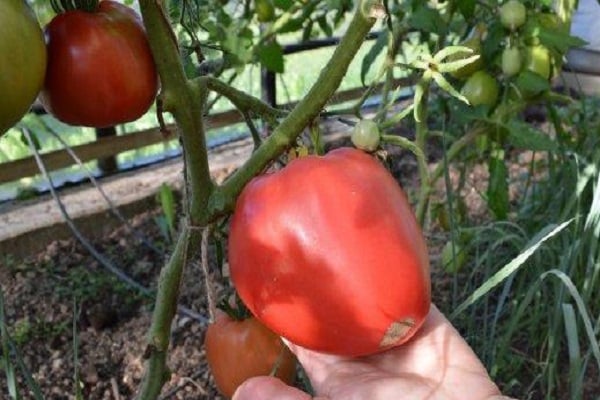
The first inflorescences on the bushes begin to form after the appearance of the sixth true leaf. The rest of the inflorescences appear in two leaves.
Features of fruits
The peculiarities of the Eagle Heart tomatoes include fruits that are quite large. Each ripe tomato weighs about one kilogram. Tomatoes have a slightly elongated shape and are painted in a bright pink color. The flesh under the skin is dense and fleshy, making ripe tomatoes very elastic. Tomato peel copes with temperature fluctuations and does not crack even after long-term storage. The taste qualities of the Eagle Heart are distinguished by a sweetish aftertaste with a slight sourness.
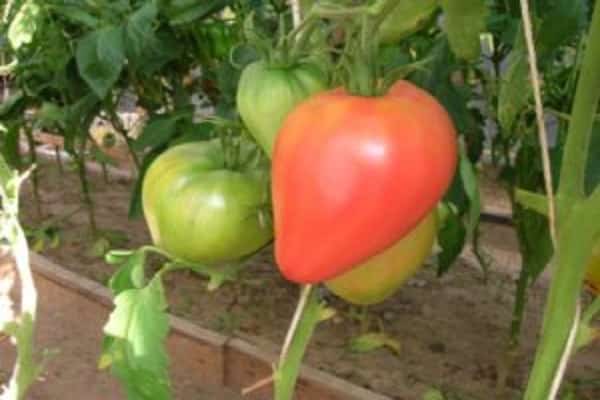
The harvested variety is used in cooking to create fresh salads from vegetables or other vegetable dishes. The fruits contain a lot of dry substances, thanks to which it is possible to prepare thick tomato juice. It is eaten fresh, closed for the winter, or used to make a sauce or ketchup.
Advantages and disadvantages
Tomato The eagle heart, like many other varieties of tomatoes, has positive and negative sides. The advantages of the variety include the following:
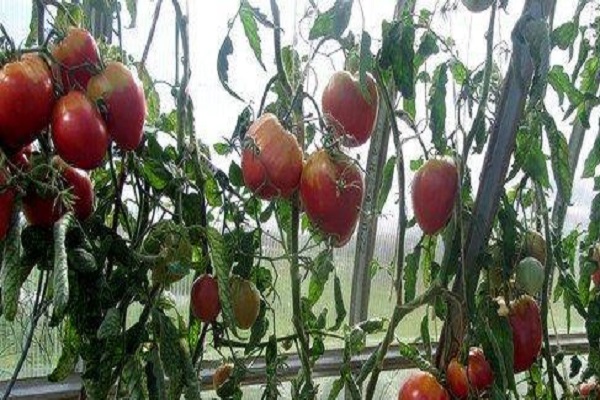
- The fruits ripen at different times, which allows harvesting within 1-2 months.
- The tomato has a high yield, thanks to which more than 10 kg of fresh tomatoes can be harvested per square meter.If you follow agrotechnical rules, the yield can be increased to 15-17 kg.
- The tomatoes have a non-cracking skin, which allows them to be transported over long distances.
- The duration of storage of the harvested fruits in optimal conditions is 3-4 months.
- The eagle heart is resistant to most common diseases that affect nightshade crops.
- Ripe tomatoes cope with sudden temperature changes.
The variety has much fewer disadvantages than advantages. The main ones include:
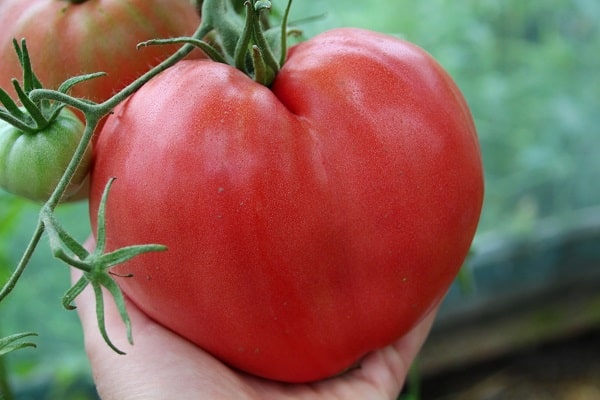
- the need to grow tomatoes only in fertile soils;
- the need for regular pinching and tying up tall bushes.
The considered disadvantages significantly complicate the cultivation of the Eagle Heart for beginners.
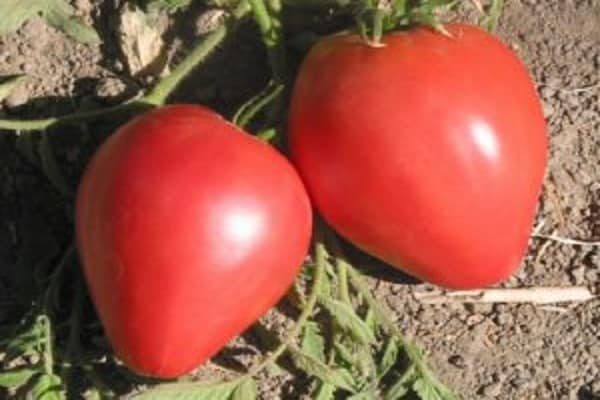
Growing
Before planting any kind of tomato, you must familiarize yourself in detail with the features of this process so that no questions arise during planting and growing.
Sowing dates
First, you need to determine the timing of planting tomato seeds Eagle heart for growing seedlings. Experienced gardeners recommend doing this in the second half of March or early April, so that by summer you can transplant the seedlings into the garden. Residents of the northern regions of the country can postpone planting by a month in order to protect the transplanted seedlings from night frosts.
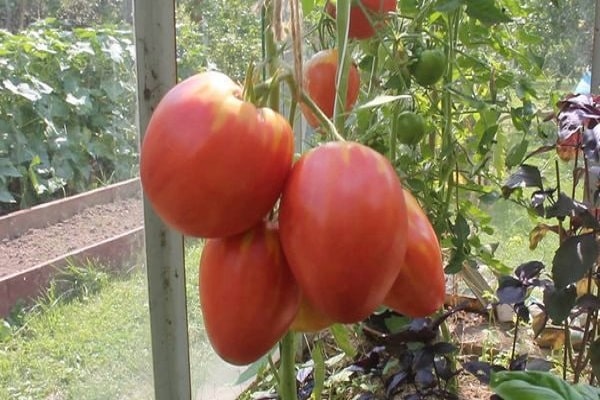
The timing of planting seedlings depends on the speed of its growth. Transplanting seedlings into open ground is carried out when at least seven true leaves appear on the plant.
Seat selection
Before you start planting seeds and growing seedlings, you need to decide where the grown seedlings will grow. When choosing a suitable site for tomatoes, pay attention to the lighting. Tomatoes are considered a light-loving plant and therefore should not be planted in the shade. Insufficient light negatively affects the yield and growth rate of the bushes.
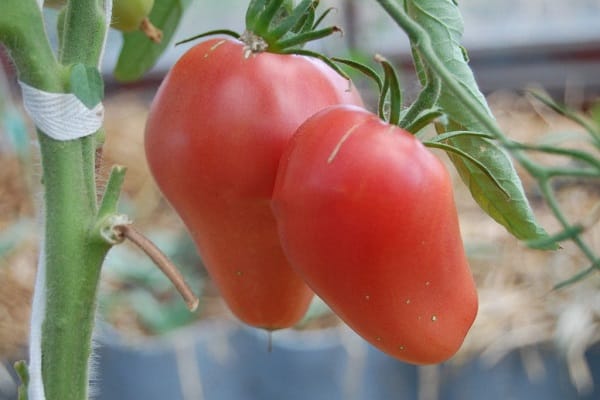
Also, when choosing, the features of the soil on the site are taken into account. The soil must be fertile and contain enough nutrients that are necessary for the normal growth of the Eagle Heart.
Seed preparation
Before planting, preliminary preparation of seeds is carried out. First, the seeds are carefully sorted out to select the largest of them. Then all the selected planting material is disinfected for further protection from diseases and pests. For disinfection, use a weak manganese solution, in which the seeds are placed for 10-20 minutes. Then the seeds soaked in manganese are washed with plain water and dried.
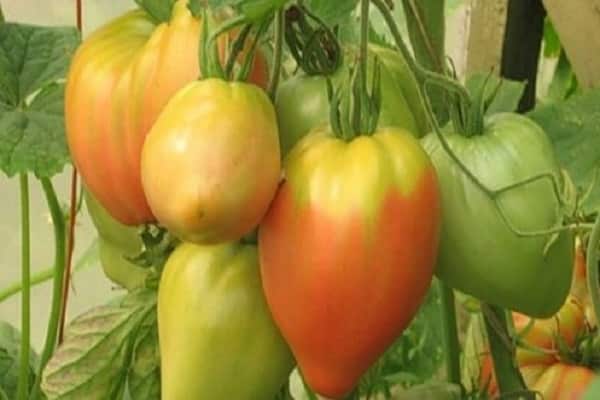
Some for disinfection are engaged in heating the seed. To do this, it is placed in a weakly preheated oven for 5-7 minutes.
Sowing seeds for seedlings
First, all containers intended for growing seedlings are completely filled with soil. After that, shallow grooves are made in the ground, into which the tomato will be planted. After planting all the seeds, the grooves are covered with soil and moistened with heated water.
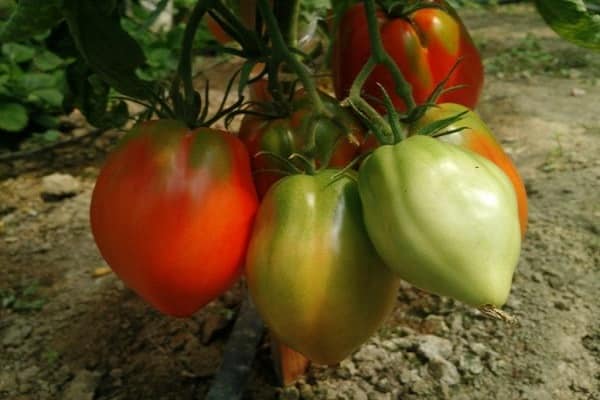
During planting, you need to monitor the distance between the seeds so that they are not too close to each other. The minimum distance between them is 2-4 cm.
The containers with the planted tomatoes are transferred to a lighted room with an air temperature of at least 20 degrees.
Planting seedlings
Planting tomato seedlings begins with the creation of holes on the site. The depth of each hole should be 10-12 cm, and the length should be about 25 cm. The seedlings are placed in them at a slight angle of 50 degrees. In this case, the roots should be located on the south side, and the trunk of the bush - on the north.

Before planting, it is necessary to remove the lower leaves on the seedlings so that they do not come into contact with the ground during planting.On contact with the ground, the leaves can become infected, which will contribute to the appearance of the disease.
Care rules
To get a high-quality harvest, every gardener should become familiar with the features of caring for the Eagle Heart tomato.

Watering, weeding and loosening
The soil in which the tomato is grown must be moistened regularly so that it does not have time to dry out. It is recommended to do this at least once every 2-3 days. On hot days, you will have to do watering daily, as the earth dries out much faster at high temperatures.
After watering, the surface of the soil is covered with a crust, which is better to get rid of immediately. Therefore, the soil is periodically loosened and weeded. Experienced vegetable growers recommend to loosen the soil at least once a week.

Top dressing
When growing tomatoes, fertilizing is imperative in order to maintain the optimal amount of nutrients in the soil. Nitrogen fertilizers are added to the ground, which improve the growth of leaves and stems. However, you should not add a lot of nitrogen to the soil, since the ripening of fruits slows down due to oversaturation with this substance. Organic fertilizers in the form of dung or mullein are also added to the ground, which increase yields.
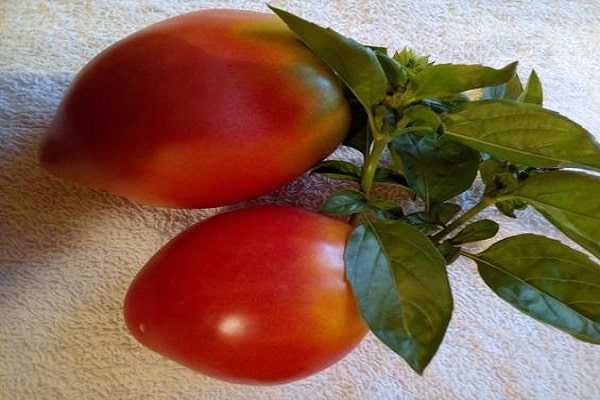
Bush formation
It is no secret that tomatoes grow rapidly and therefore you have to monitor their growth. In order for the plant to bear fruit well and have large fruits, it is necessary to periodically cut off the stepsons on the bushes. This should be done at least 2-3 times a month.
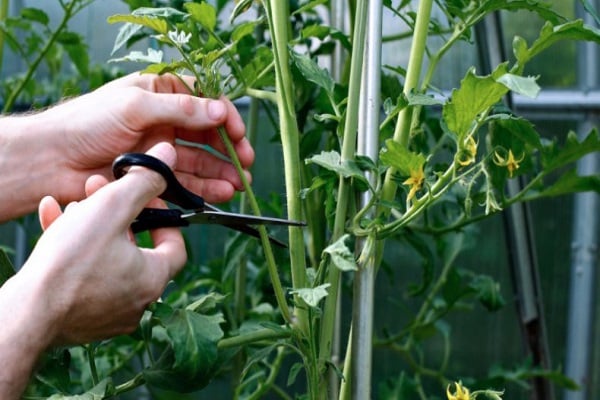
Garter
Tall bushes need to be tied, as without it they will break under the load of ripe fruits. Most often, ordinary pegs are used for garters, which are placed near each planted plant. It is recommended to use supports with a height of about 80-90 cm or slightly higher.
For better fastening, each peg is dug into the ground to a depth of about 20-30 cm. When the stakes are dug in, the main stem of the tomato bush is tied to each of them with a rope.
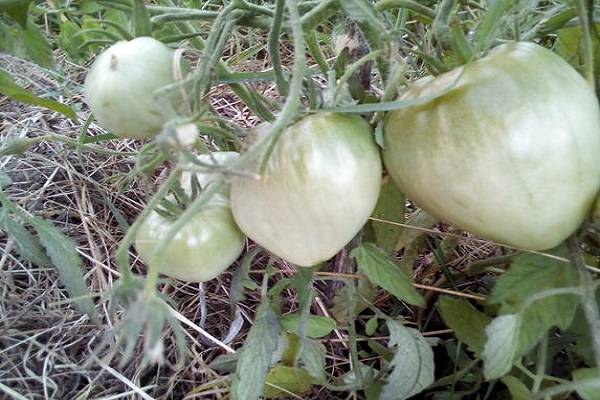
Protection against diseases and pests
In order to preserve the planted tomato bushes, it is necessary to take care of their protection from common insects and diseases, which often lead to the death of plants, in advance.
To protect against rot, it is recommended to regularly add wood ash mixed with calcium nitrate to the soil. Also, the biological preparation "Boverin", which is produced specifically to protect tomatoes, will help from most diseases and pests.
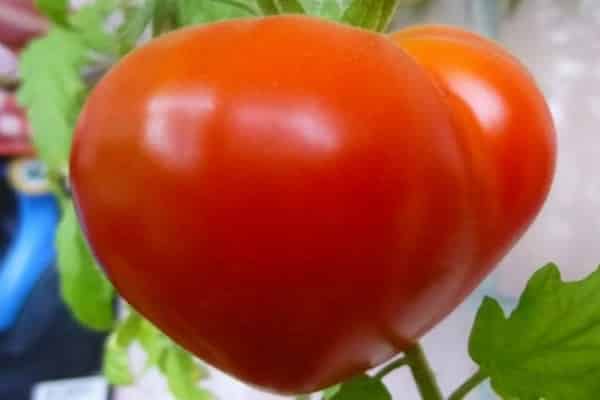
Harvesting and storage
The yield of the Eagle Heart tomato is high, and therefore it takes a long time to collect the fruits. During harvesting ripe tomatoes pay attention to their color. Their peel should be completely red, with no blotches of green.
The collected tomatoes are thoroughly washed, dried and placed in a cellar for further storage.
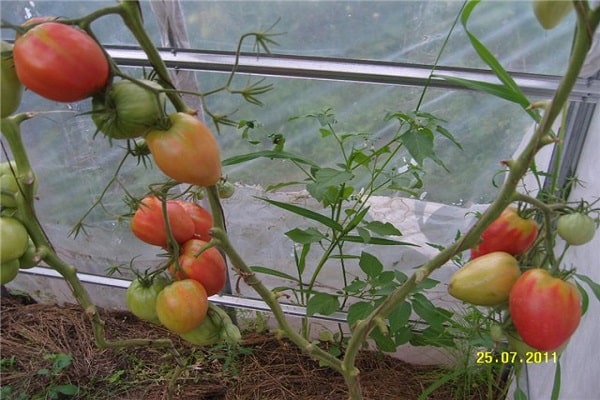
Conclusion
Many vegetable growers are engaged in the cultivation of Eagle Heart tomatoes. To get a tasty harvest, it is recommended that you familiarize yourself with the features of its planting and cultivation before planting the variety.
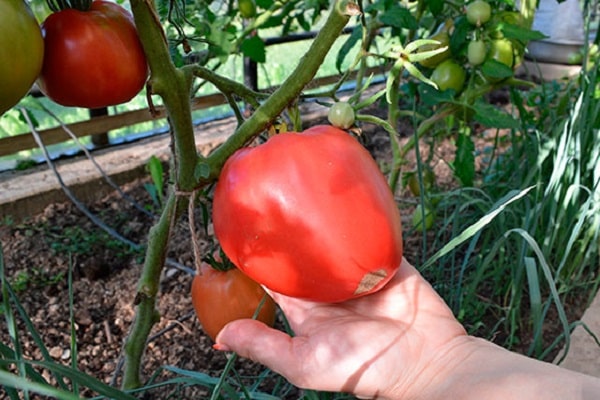
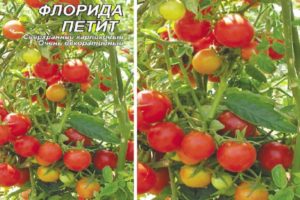
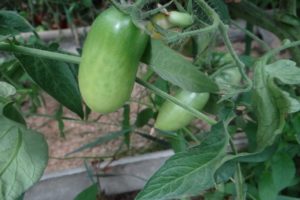


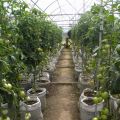



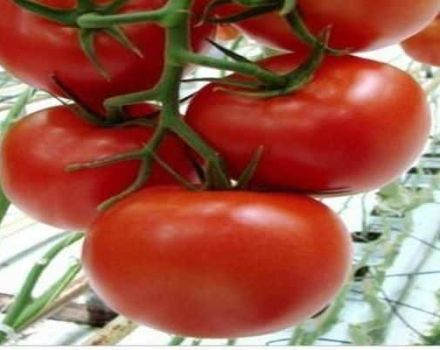
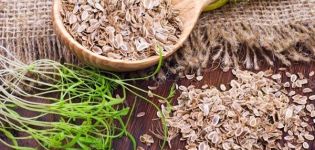
We call this variety "bull heart". Very tasty and fleshy fruits, especially good for salad or just to eat. I am using a bioactivator of growth BioGrow, with him tomatoes generally grow unrealistically large.